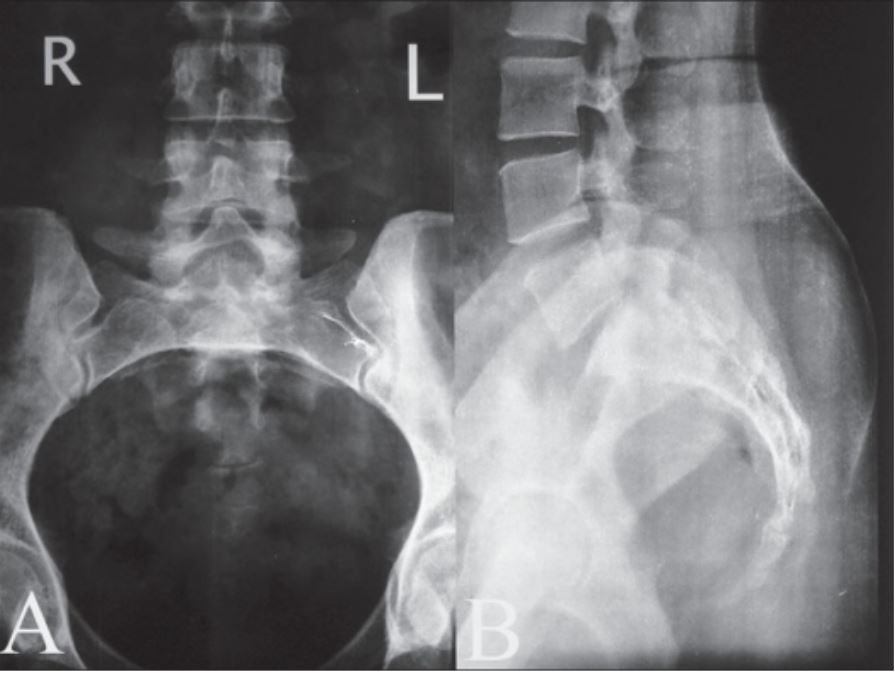Playlist
Show Playlist
Hide Playlist
Intradural Intramedullary Myelopathy
-
Slides Diseases of the Spinal Cord.pdf
-
Download Lecture Overview
00:00 So let's talk about how we approach these patients. There are some differences between this patient and our last case and last patient. This patient has significant asymmetric symptoms which points towards a potential for demyelinating lesion. 00:15 We said the work-up for demyelinating lesions in the spinal cord include CSF, inflammatory markers, and maybe the potential for arterial imaging though that's unlikely to be helpful in this case. And ultimately this patient was diagnosed with idiopathic transverse myelitis. So let's talk a little bit more about idiopathic transverse myelitis. Transverse myelitis just means inflammation at a specific segment in a level, an area of the spinal cord and idiopathic means we don't have a cause. It's not from multiple sclerosis, it's idiopathic. We don't know the cause. Here, we can see focal cord enlargement in the acute setting. There's T2 flare hyperintensity often extending over 3-4 segments in some patients. We often see centrally located pathology that occupies more than 67% of the cord. A lot of the cord is involved with that abnormal signal. Patients may have central dark spot, which is thought to be the squished gray matter in this white matter lesion, and often less avid contrast enhancement than with spinal cord tumors which typically avidly enhance with contrast. So in summary, let's look at some of the differences in the demyelinating myelopathies in the findings in those patients. MS is a cause of demyelinating myelopathy. We typically see oval-shaped lesions that are present at the periphery of the spinal cord. They span less than 2 spinal cord segments and we see hyperintense signal on the T2 weighted MRI images and typically homogenous enhancement. That's different from neuromyelitis optica, where we typically see a longitudinally extensive transverse myelitis. That means spinal cord signal, intramedullary signal spanning 3 or more segments, cord swelling and GAD enhancement or avid enhancement in the acute setting. That's a little different from ADEM or acute demyelinating encephalomyelitis which is a monophasic illness where both the brain and spinal cord become inflamed classically after a vaccination. 02:21 This typically spans 3 or more segments of the spinal cord with spinal cord swelling and gadolinium enhancement acutely and is a monophasic illness that only occurs once. And then lastly, idiopathic transverse myelitis. We typically see cord signal occupying 50 to more than 67% of the cross sectional area of the cord, a large cross section of the cord. There is hyperintense signal in T2. There can be hypointense signal in T1 and patchy enhancement. So this is the pattern of 4 of the more common inflammatory conditions that affect the spinal cord.
About the Lecture
The lecture Intradural Intramedullary Myelopathy by Roy Strowd, MD is from the course Diseases of the Spinal Cord.
Included Quiz Questions
Which demyelinating myelopathy matches correctly with its typical MRI findings and/or clinical presentation? (Select all that apply.)
- MS: oval-shaped, involves < 2 vertebral segments
- MS: round-shaped, involves > 3 vertebral segments, brain not involved
- Neuromyelitis optica: involves > 3 vertebral segments, swollen cord, gadolinium enhancement acutely
- Acute disseminated encephalomyelitis (ADEM): often after vaccination, > 3 vertebral segments, swollen cord, gadolinium enhancement acutely, monophasic illness/occurs once only
- Idiopathic transverse myelitis (ITM): extends 3–4 vertebral segments, involves one-half to more than two-thirds of the cross-section of the cord, may be a patchy enhancement
Customer reviews
5,0 of 5 stars
| 5 Stars |
|
5 |
| 4 Stars |
|
0 |
| 3 Stars |
|
0 |
| 2 Stars |
|
0 |
| 1 Star |
|
0 |




